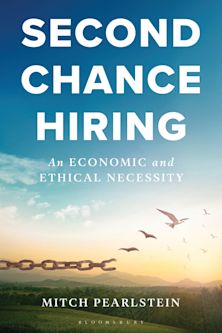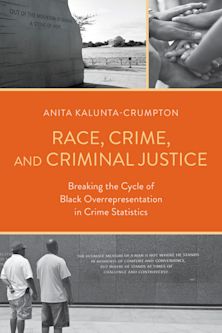Perverts and Predators
The Making of Sexual Offending Laws
- Textbook
Perverts and Predators
The Making of Sexual Offending Laws
- Textbook
For information on how we process your data, read our Privacy Policy
Description
Perverts and Predators elaborates on the numerous factors that have contributed to the passage of sexual offending laws in the United States. Authors Lisa and Laura Zilney weave together a story of how sex crimes laws were created by analyzing the changing roles of religion and the medical community, offering theoretical explanations for sex offending from the unique perspectives of criminology and sexology. Working under the central premise that sex and sexuality are positive and healthy and that the only way to deal with the issue of sexual offending is through sex positive education and counseling, Zilney and Zilney trace the history of sex offending laws and highlight cases in the media that contributed to increasingly punitive legislation.
The authors provide information concerning the prevalence and incidence of sex offending, including victim and offender profiles and the frequency and types of offenses committed in order to give readers greater understanding of the problem. They discuss politics as a major player in the creation of a moral panic surrounding sex offenders and fueling public outrage to garner support for "get tough" laws. The management of sex offenders in society is discussed, as are consequences of the punitive approach for both the offender and the victim. Comparative case studies are used to explore what the United States could learn from other countries' approaches to sexual offending.
Table of Contents
Preface
Part I: Historical Perspectives on Sexual Offending
1 The Role of Religion
Christianity
Judaism
2 The Medical Model
The Medical Model
Key figures in Medicine
Diagnostic and Statistical Manual of Mental Disorders
Other Tests for Sexual "Predators"
3 Is There Any Explanation?
Sexological Thoery
Feminist Theory
Sociological and Criminological Theories
The Usefulness of Theory
4 Historical Sexual Offending Laws
Societal Responses to Sexual Offending
Case Study: The Changing Age of Puberty
A war on Sexual Offenders Begins in the 1930s
Reform of the 1960s and 1970s
The 1980s
Part II: The Crime and the Criminals
5 Laws, Laws, and more Laws
Chapter 11 6. Counting the Problem
Chapter 12 7. Controlling Offenders
Chapter 13 8. Considering the Victims
Part 14 III. Learning Alternatives
Chapter 15 9. Can Treatment Work?
Chapter 16 10. Looking Beyond U.S. Policies
Chapter 17 References
18 Index
Product details
| Published | 16 May 2009 |
|---|---|
| Format | Ebook (Epub & Mobi) |
| Edition | 1st |
| Extent | 218 |
| ISBN | 9780742566248 |
| Imprint | Rowman & Littlefield Publishers |
| Series | Issues in Crime and Justice |
| Publisher | Bloomsbury Publishing |
Reviews

ONLINE RESOURCES
Bloomsbury Collections
This book is available on Bloomsbury Collections where your library has access.



































